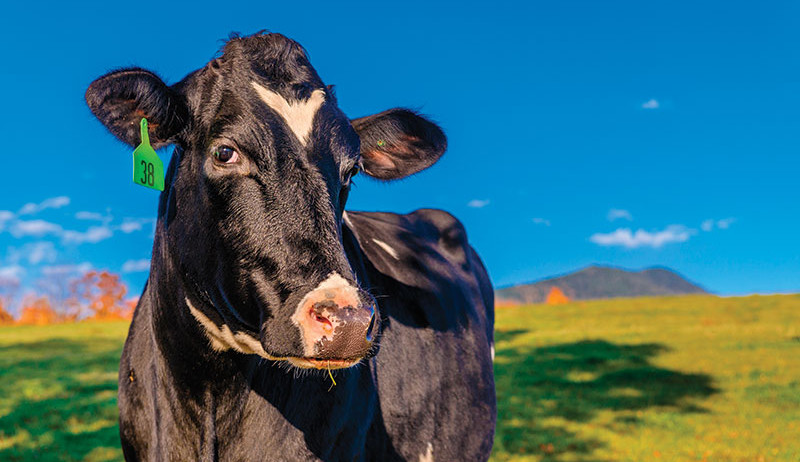
For dairy and beef cattle, there isn’t a single formula that provides an ideal diet. While there are guidelines for nutrition you should follow, the feedstuffs you choose will depend on your farm and what is available.
Dairy Cattle
Successfully manage a dairy cow’s diet and nutrition by remembering that it will change as her stage of milk production changes. About 60 days prior to calving, a dairy cow that is being milked should be dried off. Her intake will decrease, and the quality of the feed she is consuming can decrease as well. Keeping her body condition score at a 3.5 (on a scale of 1 to 5) and feeding the correct ratio of vitamins and minerals is important. (For more about BCS, read “Why Body Condition Score Your Cows?”) Cows that freshen overweight or with incorrect vitamin and mineral balances tend to have more issues with dystocia, milk fever and ketosis. (See a list of dairy terminology below.)
At calving, most cows require more energy than they can consume and consequently lose body condition. This means a high-energy feed is needed until her milk production peaks, 45 to 60 days postpartum. Metabolic problems can be deadly during this stage so correct diets and nutrition that includes balanced energy, vitamins and mineral are essential.
See the chart below for a table which outlines nutrient guidelines for cows during various stages of lactation. The amounts given in the table are going to vary depending on age, breed and history. Not all required nutrients are listed; always consult with a nutritionist or veterinarian about cow diets.

Dairy Definitions
- Dry Off: Causing a dairy cow to stop producing milk in order to freshen for her new calf
- Dystocia: Delayed or difficult calving
- Freshen: The start of a cow’s milk production
- Ketosis: A metabolic disorder where energy demands exceed energy intake
- Milk Fever: A disorder caused by low blood calcium in pregnant cows close to calving
Beef Cattle
There are two stages to raising beef cattle intended for food: growing and finishing. The growing stage occurs after weaning and before finishing. The ideal diet during this time is very simple: Typical growing diets on a small farm consist of a forage source and a mineral supplement, which is not the same as a salt block. Important for nutrition during this stage is protein. Protein should be about 12 percent of the diet, and your forage may contain a good portion of that. For example, alfalfa hay is a good source of protein. Supplying a mineral supplement is crucial to ensure your cattle are receiving essential amino acids, vitamins and minerals.
A finishing diet typically starts 60 to 90 days before you intend to harvest the animal. The diet during this time can vary depending on your farm and your production goals; it may even be that you keep the growing and finishing diets the same.
The most common way that hobby farmers want to finish beef cattle is on pasture. If this is also how you grew your cattle, no diet changes are necessary. Grass-finished cattle produce meat that is leaner, tougher and has a distinct grassy flavor. If you would prefer a more marbled, tender and less grassy taste, you will want to finish partially with grain. If you only want to finish with a little bit of grain to take off the grassy edge, feed at about 10 to 20 percent of the diet. More grain in the diet will yield more marbling.
It will take consulting with a nutritionist or veterinarian and some trial and error to come up with the ideal diet for dairy and beef cattle on your farm. There is never just one right answer to animal husbandry, especially when it comes to nutrition. In the end, feeding healthy, happy animals is what matters most.
This story originally appeared in the May/June 2017 issue of Hobby Farms.




